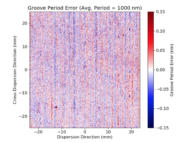
The undergrad research series is where we feature the research that you’re doing. If you’ve missed the previous installments, you can find them under the “Undergraduate Research” category here.
Are you doing an REU this summer? Were you working on an astro research project during this past school year? If you, too, have been working on a project that you want to share, we want to hear from you! Think you’re up to the challenge of describing your research carefully and clearly to a broad audience, in only one paragraph? Then send us a summary of it!
You can share what you’re doing by clicking here and using the form provided to submit a brief (fewer than 200 words) write-up of your work. The target audience is one familiar with astrophysics but not necessarily your specific subfield, so write clearly and try to avoid jargon. Feel free to also include either a visual regarding your research or else a photo of yourself.
We look forward to hearing from you!
************
Anna Zuckerman
Brown University

This guest post was written by Anna Zuckerman. Anna Zuckerman is an undergraduate entering her senior year at Brown University, where she is studying Astrophysics and Geophysics. She conducted this project through the UC Berkeley SETI Research Center Breakthrough Listen Initiative REU program in the summer of 2020.
If an extraterrestrial civilization were to intentionally or inadvertently send information in our direction, what would it look like? How could we detect such a signal? Optical lasers, or high intensity monochromatic beams of light, offer a few clear advantages from the perspectives both of information transmission and of detectability. High intensity in a narrow bandwidth means a laser can outshine a host star in a narrow region. Lasers are an energy efficient form of communication, and less noise is present in the optical (compared with radio) regions both from Earth and cosmic interference sources. In addition, it has been shown that even under the limitations of current human technology, transmission and detection of laser signals over interstellar distances would be possible. Thus, laser signals are of special interest in the search for extraterrestrial intelligence. Past studies have looked for laser signals by directly searching through the spectra (light intensity as a function of wavelength) of target stars for features that match the expected shape and intensity of laser lines. However, past methods are hampered by stellar spectral features which might resemble candidate signals.
To expand on these past studies, I developed a new, more sensitive method to detect laser signals in stellar spectra. First, we use an algorithm to match the spectrum of each target star to a library of spectra corresponding to stars with known properties. The algorithm then picks out the spectra from the library which most closely match the target. We then subtract away from the target spectrum the combination of the closest matching spectra, to produce a residual which contains only features unique to the target spectrum. Examining the residual for laser signals will provide a more sensitive laser search than previously conducted. This algorithm thus makes detection of potential signals from extraterrestrial intelligence easier. Part of my work also involved producing a new deblazing script for spectra from the Automated Planet Finder (APF) telescope, which essentially means removing the artificial brightness of pixels towards the center of the spectrum and dimness near the edges. This was necessary in order to achieve meaningful results from the algorithm. I also produced a calibration of the spectra matching algorithm to demonstrate that it works for APF observations. If intelligent life were found beyond Earth, as a result of any of the various methods of SETI, that discovery would not only represent the most important scientific breakthrough of modern times, but also a fundamental reimagining of how we understand our own place in the universe.

If you are an undergraduate that took part in an REU this summer and would like to share your research on Astrobites, please contact us at [email protected]!




